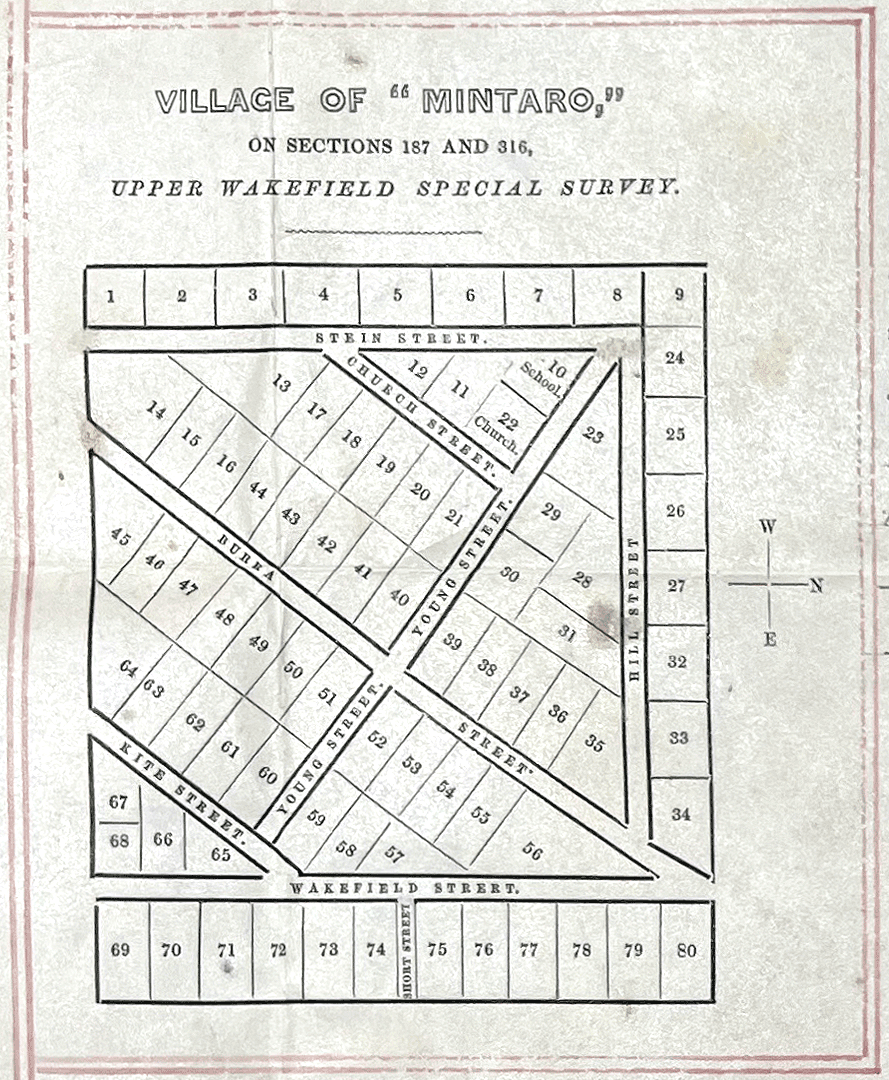Located on the traditional lands of the Ngadjuri people, the Township of Mintaro was established in 1849 by brothers Henry and Joseph Gilbert.
The mid-north area in the new colony of South Australia, of 1836, was first explored for suitable tracts of grazing and agricultural lands in 1839 by Europeans John Hill, who named the Wakefield and Hutt Rivers, and Edward John Eyre a month later, who named the Hill River.[1]
Following Hill’s exploration the Upper Wakefield & Hill Rivers Special Survey was taken out in 1840 by his friend John Morphett ‘on behalf of the absentee owner, the philanthropist Arthur Young (1810-95) of Aberdeen, Scotland.’[2]
First squatters to be granted occupation licences, in 1841, were Charles J. F. Campbell at Hill River and James Stein who founded Kadlunga.[3] ‘In 1844 overlander William Robinson (1814-89) established Hill River station, later known as the Hill River Estate, or the Hill River run, which became one of the great South Australian pastoral properties of the 19th century.’[4]
Copper mining began at Burra in September 1845 after ‘William Strear (or Streair), a shepherd employed by Stein, found the ore sample that led to discovery of the fabulously profitable Burra copper mines.’[5]
To reduce the cost and time to cart ore to Port Adelaide for shipping to smelting works in South Wales the Patent Copper Company (later the English and Australian Copper Company) established a private road in 1849, a carting route, to Port Wakefield (briefly Port Henry), which became known as the ‘Gulf Road’ (1849-1857).
The company bought sections in the Upper Wakefield Special Survey—including Kadlunga, a watering hole on the Gulf Road at the time—and established a farm to service the agricultural needs of both stock and the people of Burra.
When the road was re-routed to the east of Kadlunga, solicitor Henry Gilbert applied for and, on 1st December 1849, was granted Sections 187 & 316 for £160.[6] He later sold them to his older brother Joseph, of Pewsey Vale, in November 1850 for 10 shillings.[7]
The Township of Mintaro was subdivided into allotments and sold, the first recorded sale being allotment 55 to William Tatum of Crystal Brook in November 1849.[8] Another subdivision, Mintaro North, was added in 1867 by Peter Brady.
1851-52 saw mass departures from South Australia for the Victorian gold fields, including the dray drivers and their bullock teams. This prompted the English and Australian Copper Company to import mules and muleteers from South America, first in 1853 on the Malacca from Montevideo, Uruguay, and later from Valparaiso, Chile.[9]
Good slate deposits were found in the early 1850s west of the town on land owned by Peter Brady. In 1856 the Mintaro Flagstone Quarry was opened, under lease by Thompson Priest, an English settler and stonemason.[10]
During this time Mintaro was a busy place with up to 200 bullock drays recorded as travelling along the Gulf Road.[11] A year later in 1857 when the drays were redirected to the new railhead at Gawler they disappeared from the Gulf Road along with most of the teamsters and muleteers.
Initially a setback for Mintaro, it emerged from the loss of the copper traffic to become a major centre for slate mining and agriculture.[12]
A few of the teamsters remained and settled in Mintaro and, along with the earliest settlers of the township, the Cornish miners hired by Thompson Priest and the Irish, Scottish, and English immigrants drawn to South Australia by the governments assisted passage scheme, as well as the Polish immigrants fleeing persecution in their homeland, the foundation for Mintaro’s diverse community was set.

